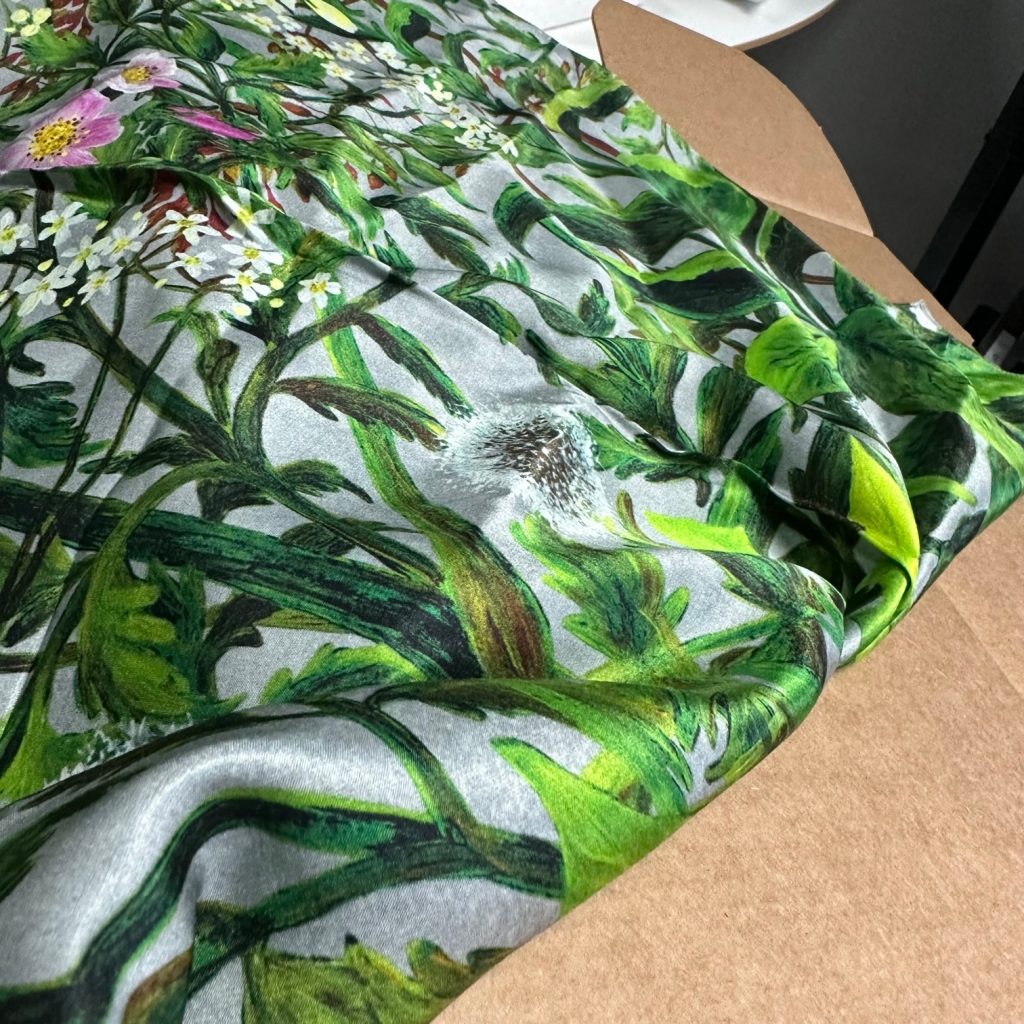The future of textiles is closely linked to the development of digital printing technologies that don’t harm the environment. With the increasing demand for personalized and environmentally friendly clothing, the ability to print fabric in the UK using digital technologies is becoming increasingly important.
Digital printing on fabric, also called direct-to-garment printing or DTG printing, is a process in which designs are printed directly onto fabric using special printing equipment. This amazing technology allows for high-resolution prints, a wide range of colors, and the ability to print complex patterns and images onto fabric. 
What Makes Digital Fabric Printing Sustainable?
There are several factors that make digital fabric printing in the UK sustainable. First, digital fabric printing uses less water and energy than traditional printing methods. This is because digital printing only requires the use of ink rather than water and chemicals.
Digital fabric printing services also let you use eco-friendly inks like soy-based inks, which break down and have less of an effect on the environment. Lastly, digital fabric printing can help cut down on fabric waste because it can be used to print custom designs and small runs. This means that there is less need for extra fabric, which is better for the environment.
Advantages of digital fabric printing
One of the best things about digital fabric printing is that it helps cut down on waste. Traditional ways of printing on textiles, like screen printing, use a lot of water and chemicals that can be bad for the environment. Digital fabric printing, on the other hand, uses water-based ink that doesn’t contain any harmful chemicals and makes very little waste.
#1 Allows flexibility in designing digitally
Digital fabric printing also allows for greater flexibility and customization in the design process. With the old ways of printing, each color in a design needs its own screen, which can take a long time and cost a lot of money. Digital fabric printing, on the other hand, allows for multiple colors to be printed in a single pass, making it easier and more cost-effective to produce complex designs.
#2 Can be printed in small batches
One of the best things about digital fabric printing is that it can make printed fabrics in small batches. This is especially helpful for small businesses and designers who might not have the money or space to print a lot of clothes the way they used to. Digital fabric printing also allows for faster turnaround times. This means that limited-edition collections can be made and sold quickly, and fashion trends can be changed quickly as well.
#3 Saves a lot of time
You can save a lot of time with digital fabric printing, as the entire process is mechanized and easy to perform. You can set the commands, and the machines will do the process quickly for you.
Despite these advantages, digital fabric printing is not without its challenges. The technology is still relatively new, and there is a lack of standardization in the industry. This can make it difficult for businesses to find the right equipment and materials and to ensure that the quality of their prints is consistent.
Why does the future of textiles depend on sustainable digital fabric printing?
The future of textiles depends on sustainable digital fabric printing for several reasons. As the number of people who want sustainable and eco-friendly products grows, it will become more important to use sustainable printing methods. Digital fabric printing lets you use inks that are better for the environment and use less water and energy than traditional printing methods. This makes it a more sustainable choice.
Digital fabric printing can also help cut down on fabric waste and make the textile industry less harmful to the environment as a whole. Finally, as consumers become more aware of the environmental impact of their purchases, the demand for sustainably produced textiles is likely to continue to grow, making sustainable digital fabric printing an important part of the future of the textile industry.
Technological changes and development are helping in the growth of digital textile printing
There have been many recent technological developments in the field of digital textile printing. These developments have made it possible to print on a wider range of fabrics and achieve higher levels of detail and accuracy in the printing process. Also, new inks and ways to print have been made that make it possible to print on eco-friendly and long-lasting fabrics. Digital textile printing is becoming a better choice for a wide range of uses, from fashion and home decor to industrial and technical textiles, thanks to these changes. As technology keeps getting better, digital textile printing is likely to become an even bigger part of the textile business.
Way Forward
The future of textiles may depend on how well digital fabric printing can be made to last. As the number of people who want sustainable and eco-friendly products grows, it will become more important to use sustainable printing methods. Digital fabric printing lets you use inks that are better for the environment and uses less water and energy than traditional printing methods. This makes it a more sustainable choice. Digital fabric printing can also help cut down on fabric waste and make the textile industry less harmful to the environment as a whole. Finally, as consumers become more aware of the environmental impact of their purchases, the demand for sustainably produced textiles is likely to continue to grow, making sustainable digital fabric printing an important part of the future of the textile industry.

